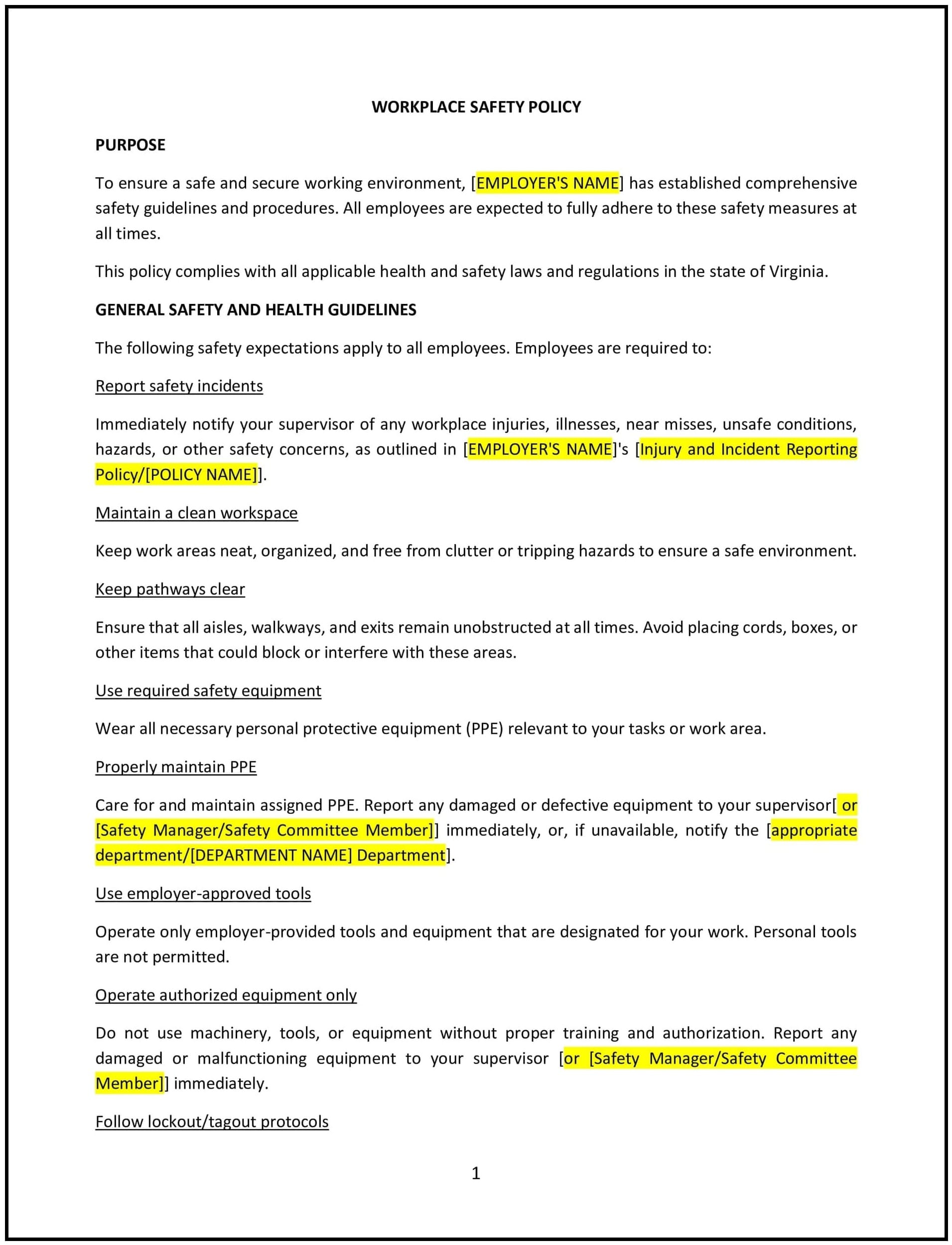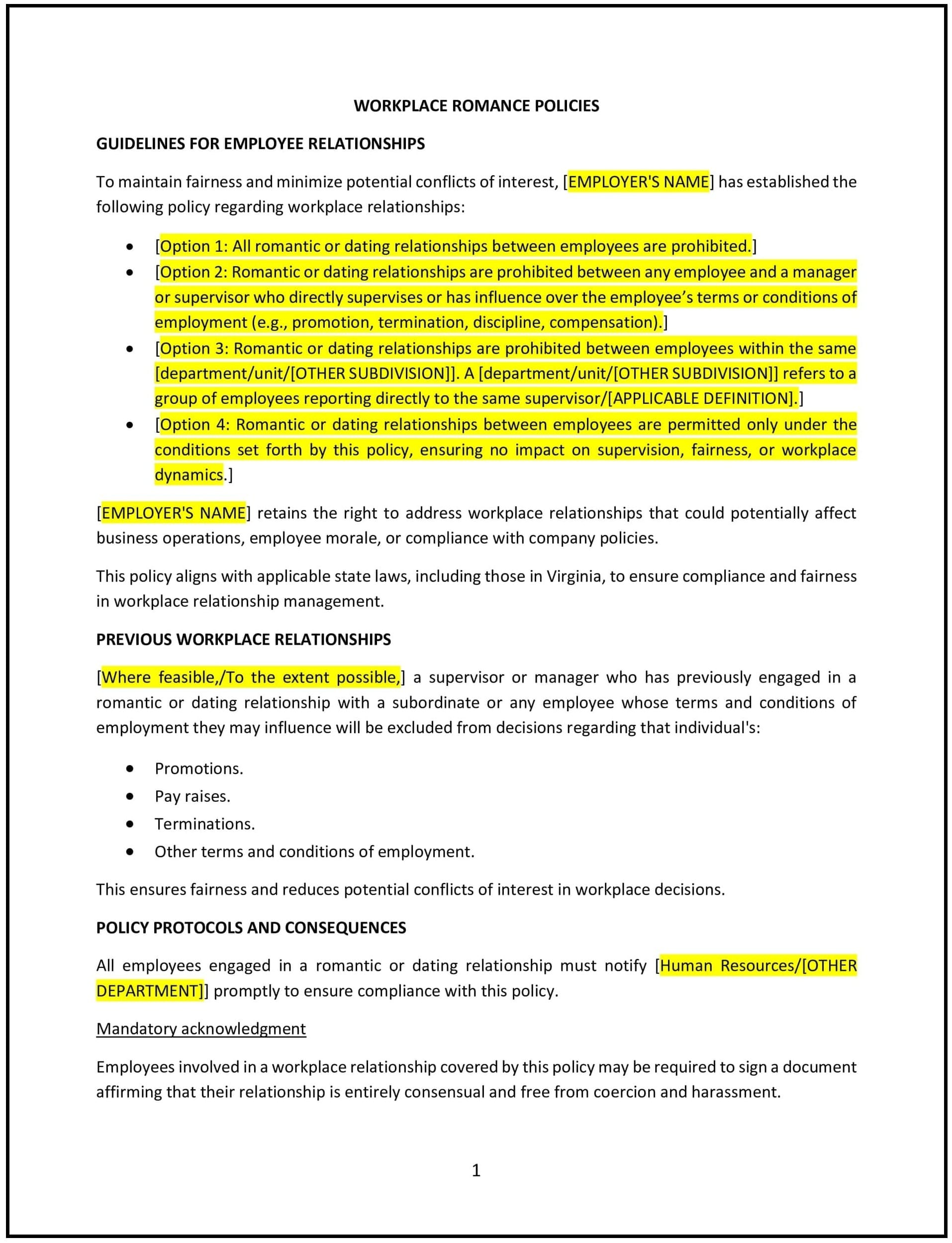Vacation policy (New York): Free template

Vacation policy (New York)
This vacation policy is designed to help New York businesses establish clear guidelines for employee vacation time. Whether businesses are managing paid time off (PTO), vacation accrual, or approval processes, this template provides a structured approach to vacation management that ensures fairness and operational efficiency.
By adopting this template, businesses can support employee work-life balance, maintain productivity, and provide clear expectations around vacation time.
How to use this vacation policy (New York)
- Define vacation eligibility: Clearly specify which employees are eligible for vacation time, including any criteria such as length of employment, job role, or full-time vs. part-time status.
- Set vacation accrual rates: Detail how vacation time is accrued, including the rate of accrual (e.g., per pay period, annually) and how unused vacation days carry over, if applicable.
- Specify the vacation approval process: Outline how employees should request vacation time, including advance notice requirements, the approval process, and any restrictions or blackout periods.
- Address vacation time limits: Define any limits on vacation time, such as the maximum number of days that can be carried over from one year to the next or the maximum number of days an employee can take at once.
- Include payout guidelines: Clarify whether unused vacation days will be paid out upon termination, resignation, or retirement, and outline the calculation method.
Benefits of using this vacation policy (New York)
This policy offers several benefits for New York businesses:
- Promotes work-life balance: Offering vacation time allows employees to recharge, which improves job satisfaction and productivity.
- Ensures consistency: A clear vacation policy ensures all employees are treated equally when it comes to vacation time, minimizing confusion and potential conflicts.
- Supports employee retention: Offering vacation time helps attract and retain employees, contributing to higher job satisfaction and lower turnover rates.
- Improves planning: By setting clear guidelines for vacation requests, businesses can plan ahead and manage workloads more effectively during peak vacation periods.
- Reduces legal risks: A well-documented vacation policy helps businesses comply with New York state laws and reduces the risk of disputes regarding vacation time.
Tips for using this vacation policy (New York)
- Communicate clearly: Ensure employees understand the vacation policy, including how vacation time is accrued, how to request time off, and any limits or restrictions.
- Be flexible with approval: Offer flexibility when employees request vacation time, but also manage operational needs by requiring advance notice and coordinating with other team members.
- Track vacation accrual: Implement a system for tracking employees’ vacation time and balances to ensure accuracy and avoid confusion during the approval process.
- Review and update: Periodically review the policy to ensure it remains aligned with business needs, employee feedback, and New York state regulations.
- Provide support for planning: Encourage employees to plan their vacations well in advance to minimize disruptions to workflow and ensure adequate coverage during peak periods.
Q: Who is eligible for vacation time?
A: Vacation eligibility is typically based on factors such as length of employment, job classification, and whether the employee is full-time or part-time. The policy should outline these criteria.
Q: How is vacation time accrued?
A: Vacation time is typically accrued based on the employee’s length of service and work schedule. The policy should specify whether it’s accrued per pay period, annually, or based on another method.
Q: Can vacation time be carried over?
A: The policy should define whether unused vacation time can be carried over to the next year or if it expires at the end of the calendar or fiscal year. Businesses may also set limits on the amount that can be carried over.
Q: How do employees request vacation time?
A: Employees should submit vacation requests in writing with a specified amount of notice, allowing for approval or denial based on business needs. The approval process should be clearly outlined in the policy.
Q: Is unused vacation time paid out?
A: The policy should specify whether unused vacation time is paid out at the end of employment or when an employee leaves the company. The calculation method for payout should be included.
This article contains general legal information and does not contain legal advice. Cobrief is not a law firm or a substitute for an attorney or law firm. The law is complex and changes often. For legal advice, please ask a lawyer.


